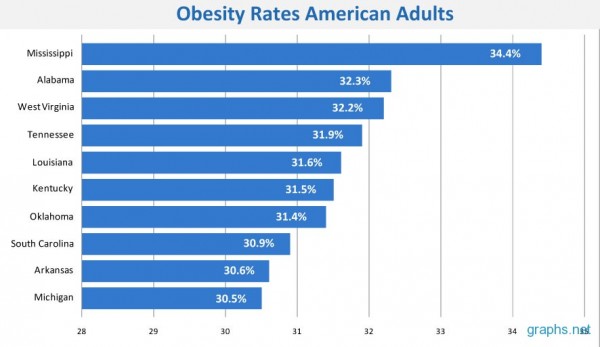Obesity Statistics Worldwide
The BMI cutoff points serve as a guide to determine whether you are overweight or obese. However, the health risks associated with overweight and obesity are irregular and do not necessarily match up according to the rigid cutoff points of the BMI.
Increase in Health Risks
For example, an overweight individual with a BMI of 29 does not immediately acquire additional health consequences associated with obesity simply by going beyond his 29 BMI onwards obesity.
Nonetheless, the increase in a person’s BMI also generally increases his health risks.
It is this sense that you should start to be bothered by the disease’ general consequence in the health of a population and studying a little bit of available obesity statistics can help you find your place in the chances for obesity.
To be able to appreciate the information given by obesity statistics, you must first realize that there are a lot of individuals going through the same dilemma yet under different circumstances.
What the Numbers Say
This is why different surveys and researches are conducted to produce multiple obesity statistics to be able to cover all data to keep their findings accurate and produce more significant new findings.
Obesity statistics reflect various factors related to the disease such as adult obesity, childhood obesity, eating habits, the prevalence of hypertension (high-blood pressure) in obese people, the occurrence of other related diseases like high-blood cholesterol, gallbladder and cardiovascular disease, and cancer, also the cost of obesity, the rate of change of obesity prevalence over the years, the number of physically active individuals in the population, and the morbidity of obesity statistics.
The National Health and Nutrition Examination Surveys (NHANES) provided data for the years 1999 to 2000 and revealed significant information.
Obesity Statistics in America
In general, their various obesity statistics taken all together showed that the prevalence of the obesity condition in the United States ranks higher that that of its prevalence in the developing nations, while also leading the other developed countries in acquiring the disease. From this outset, other conclusions are also involved.
Nearly one-third of the US population are obese, 30.5%/ 61.3-million men and women. The prevalence of ‘overweight’ for children and adolescents is increasing in the United States.
Approximately 15.3% of children ages 6-11 and 15.5% of adolescents ages 12-19 were overweight, and an additional 15% of children and 14.9% of adolescents at risk for overweight.
Most studies also show an increase in mortality rate associated with obesity as obese individuals have a 50 to an ultimate 100% increased risk of death from all causes.
Even those moderately obese people have their life expectancy shortened by 2 to 5 years.







